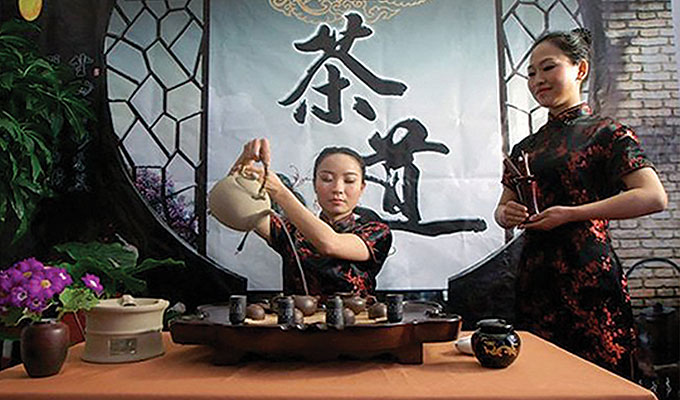We can never borrow each other’s mouths. I will never know what it means to taste the way you do, nor you me.
Then again, perhaps if we could try that, we would no longer be the sufficiently the same people we originally were to make the new observation meaningful…
Anyway, that imperfect empathy is part of the tragedy of writing and reading about food and drink. I also often wonder if my speculations on taste may be even less meaningful to someone who has a Y chromosome.
In Classical legend, there was the figure of Tiresias, who experienced life first as a woman, then a man. Sadly, none of the questions people queued up to ask the old man related to his gustatory functions, so we are still at a loss.
- Sugar-Free Bottled Tea; China’s Wu Tang Clan
- Which Tea Brand Best Compliments Your Private Jet?
- Long Time, Long Jing No See
What science tells us about the human tongue suggests that men’s and women’s taste and smell are largely similar. Yes, there’s an increased likelihood of a woman being a “super-taster”, but that difference is probably more quantitative than qualitative; her tongue simply contains more taste receptors (nee ‘buds’).
Yet, we do readily assign masculinity or femininity to drinks, don’t we?
Is Bacardi Breezer a “woman’s drink”? Yes. Arguably, gender-loading was crucial to the conception of that one.
Is Chardonnay a “woman’s drink”? If so, it has become so by association. A visit to the UK last month also suggests its place as a “be good to yourself, girl” drink has been supplanted by Prosecco).
An international craft-beer renaissance is underway. But it is still the bearded hipsters drinking more of the stuff than the dungarees-dress wearing hipsters. Beer, somehow, remains a “rough”, “unrefined”, “dude’s” drink. I hate that word.
- Apocalypse Tea; Should I Drive After Drinking This?
- Perfect Median; China’s Take on Earl Grey
- Swallowing is Just the Beginning; Rain, Flower, Cloud!
What inspired me to address this subject was a recent conversation about “ginger tea” (姜茶). This is a traditional “comfort” drink in China, once made by mothers, using black sugar [红糖] and boiled ginger. Yes, technically, there is no “tea” in it. Latterly, it has become popular as a sachet containing powder, added to hot water.
I was told just how gender-imbalanced is the market for this product. So firm is the belief that the product relieves monthly troubles for one half the population that the other half is scared of touching it.
Even more than the home-made version, the convenience version of this drink (flaunting female brand mascots and ambitious health claims) carries a stain. Men run a mile from it.
This is consistent with the theory that male disgust/insecurity drives most gender-specific marketing.
It is therefore a welcome relief to find how few teas in China have acquired such associations. Drinking leaf tea in China remains a truly unisex activity.
Sure, there are the tea names, such as Oriental Beauty (东方美人) and Goddess of Mercy (铁观音), as well as the recurring images of young girls picking leaves and performing tea ceremonies. But the drinking of these teas has never been the preserve of one sex.
Compared with western tea terms like “Builder’ Brew” and “Lady Grey” (for the “floral” jasmine-scented version of bergamot black tea), Chinese tea remains unaffected by colour-coding conventions and gender envy.









